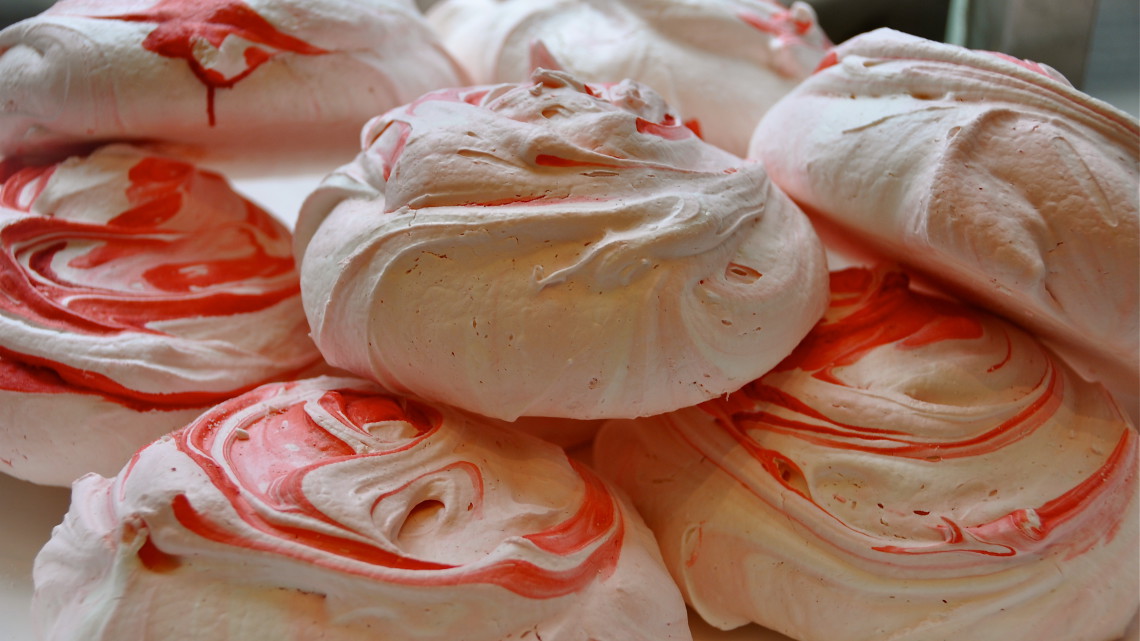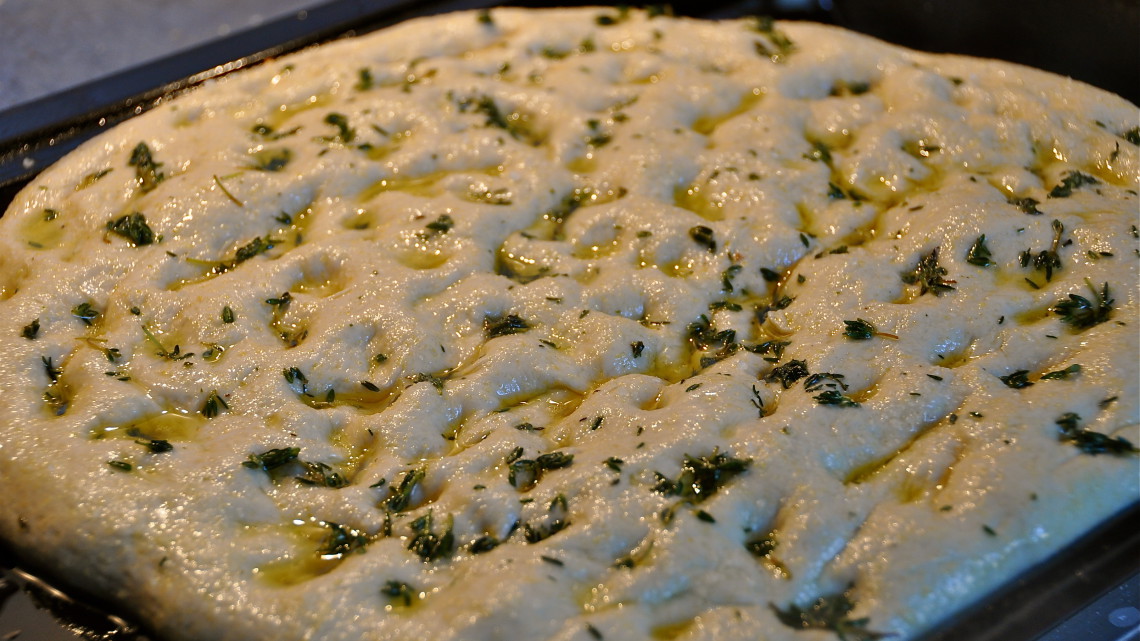Meringues
Ingredients
200 g egg white, at room temperature
400 g caster sugar
a little lemon juice
Method
Start by weighing your egg whites. Weighing your egg whites gives you more accuracy to achieve the half egg white ratio and will ensure that your meringues are perfect every time.
Preheat the oven to fan 110° C and line 2 or 3 oven trays with baking paper. Rub the bowl of a heavy-duty mix with half a lemon. The lemon juice ensures that the bowl is fat free and the little touch of acid helps the egg whites beat up better.
With the whisk attachment fitted, start the machine on low speed. This helps to break the 'bonds' in the egg white so that it will beat up to a larger volume. Once the egg white turns foamy, increase the speed to high and beat until it turns white and starts to the thicken.
Now it's time to start adding the sugar, about a large tablespoon at a time. Keep the machine running and take care that it has beaten in well after each addition. Once all the sugar has been added, you should have a thick, glossy meringue. Spoon or pipe mounds on to the oven trays. You can leave them plain, or top them with a dusting of cocoa powder, chopped nuts or a bit of food coloring, for an interesting effect.
Place the meringues in the oven and bake. After 30 minutes, reduce the temperature to 100° C and allow to bake for a further 2 hours. After that time, turn off the oven and allow the meringues to cool oven. Serve, stacked up with whipped cream and seasonal fruit.
Meringues keep well for weeks if stored properly in an airtight container.
You can also play around with the flavours of the meringues. Try adding a touch of instant espresso powder for coffee meringues, or some rose water or orange blossom water for an exotic twist.
We, the Amsterdam Flavours chefs, hope you enjoy this recipe as much as we do. If you have any questions on how to prepare it or just want to send us your feedback, you can reach us here Contact Amsterdam Flavours
Pears Baked in Red Wine
Serves 8
Ingredients
1 to 1½ bottles robust Italian red wine
rind of 1 lemon and 1 orange
2 cloves
½ cinnamon stick
4 peppercorns
1 bay leaf
200 g sugar
8 pears (Conference or Williams)
Method
Preheat the oven to 180° C. Place all the ingredients except the pears in a pan with a little extra water. Bring to the boil and simmer for 15 minutes.
Wash the pears, remove the core from underneath with a pomme Parisienne- bore (or with a teaspoon), leave the stalk on.
Place the pears in the pan, stalks pointing up. Bake in the oven without a lid for 1½ hours. In the beginning the pears should be almost covered with wine, later this will evaporate, leaving a sort of caramelized skin on the top of the pears.
Take the pears out of the cooking juice carefully so as not to break the skin, and place on a serving dish. Strain off the cooking juices and reduce until the syrupy in texture with a good rich flavour. Allow to cool slightly and serve with the pears.
This dish may be eaten hot or cold. Delicious served with ice cream or mascarpone flavoured with vanilla.
We, the Amsterdam Flavours chefs, hope you enjoy this recipe as much as we do. If you have any questions on how to prepare it or just want to send us your feedback, you can reach us here Contact Amsterdam Flavours
Roast Duck Breast with Red Wine and Citrus
SERVES 4
Ingredients
4 duck breasts, about 150g to 200g each
rosemary sprigs or leaves
FOR THE SAUCE
1 small onion, thinly sliced
1 tablespoon olive oil
250ml dry red wine
250ml chicken stock
1 tablespoon chopped sage leaves
grated zest and juice of an orange
grated zest and juice of a lemon
1 tablespoon honey
salt and freshly ground black pepper
TO GARNISH
wedges of orange and lemon
Rocket or watercress
TO SERVE
roasted potato chunks
Method
Preheat the oven to 200° C. Score the fat of the duck with a sharp knife in a criss-cross fashion. Place in a non-stick frying pan over medium-low heat, skin-side down, to brown slowly and render the fat. Pour off the fat as it accumulates in the pan. Turn up the heat and cook the duck on the meat side for 1 minute. Remove to a roasting tray, tucking a sprig of rosemary under each breast.
To make the sauce, very gently cook the onion in the heated olive oil until softened and golden brown. Add the wine and reduce by two thirds. Add the stock and reduce by half. Remove the onion and discard. Add the sage, citrus zests, juices and honey and simmer for 5 minutes. Add a twist of black pepper and check the seasoning.
Pour the sauce over the duck and roast for 7-10 minutes. Allow to rest before serving, garnished with citrus wedges and rocket or watercress.
We, the Amsterdam Flavours chefs, hope you enjoy this recipe as much as we do. If you have any questions on how to prepare it or just want to send us your feedback, you can reach us here Contact Amsterdam Flavours
Focaccia
Ingredients
1 kg bread flour
120 g polenta
20 g salt
35 g fresh yeast or 17 g dried yeast
about 600 ml lukewarm water
Method
Place the flour, polenta and salt in the bowl of a stand mixer. Place the yeast in a bowl or measuring jug, add the warm water and mix to dissolve the yeast.
Carefully pour the yeasted water into the flour mixture and turn the machine on to a low speed until a dough has formed. If the mixture is too dry, add some more warm water until you have a soft dough. It's important that the dough is not too dry otherwise your bread will be heavy and won't rise well.
Remove the dough from the mixer bowl and knead for a few minutes on a lightly floured surface. Shape into a ball, cover with a damp tea towel and let the bread rise for about an hour until doubled in size. This is called the first proving.
Preheat the oven to 200° C. Knead the dough to and flatten out onto an oven tray greased with olive oil. Press the dough with your fingers forming little holes. Drizzle generously with olive oil. The little holes will fill with oil, which will add a beautiful flavour and texture to the bread. Top the brad with whatever flavourings you like: coarse sea salt, fresh herbs such as rosemary or thyme, caramelized onions, oven-dried tomatoes. The choice is yours.
Allow the bread to rise again for a further 20-30 minutes. This is called the second proving. Place the bread into the oven for about 30-35 minutes.
The bread is done when it releases itself easily from the tray, the bread sounds 'hollow' when tapped and that it has a beautiful golden color. Allow the bread to cool on a wire rack. Serve in slices while still warm.
If you don't have a mixer, this can all be done by hand. Bare in mind, you'll have to knead the dough for a good 10 minutes, but at least you won't have to go to the gym! The dough should them be smooth and silky and not stick to your hands.
We, the Amsterdam Flavours chefs, hope you enjoy this recipe as much as we do. If you have any questions on how to prepare it or just want to send us your feedback, you can reach us here Contact Amsterdam Flavours




